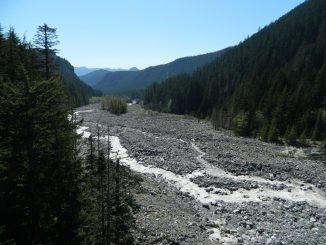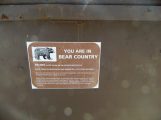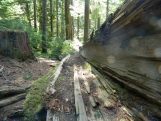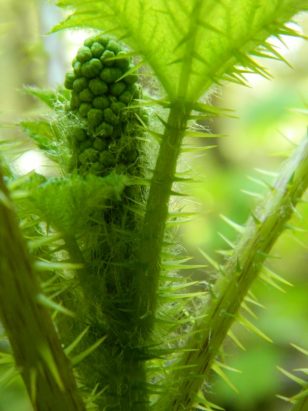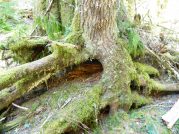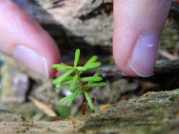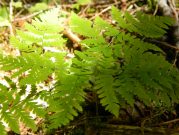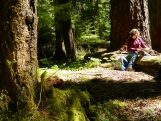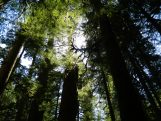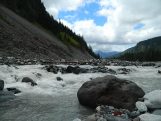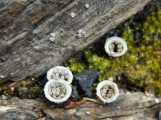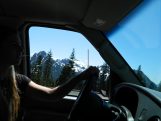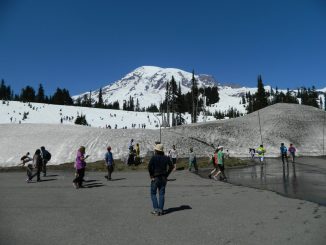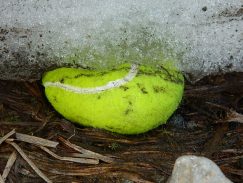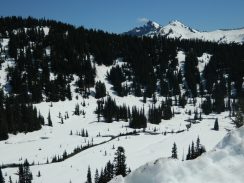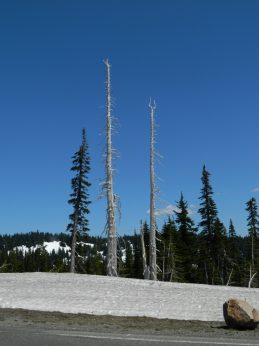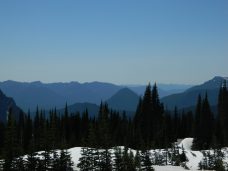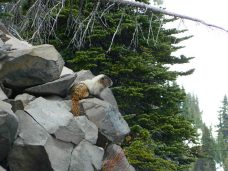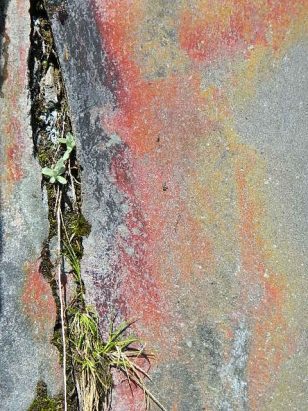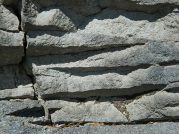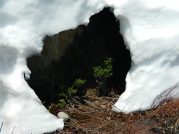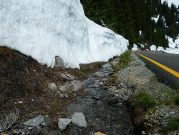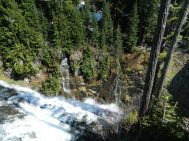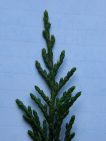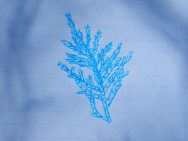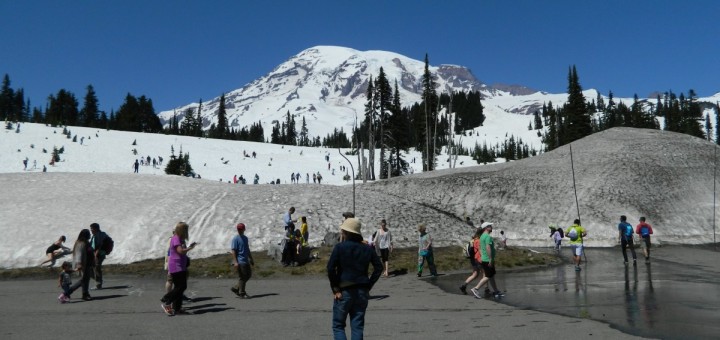
Mount Rainier is a place with immense power. I know I could definitely feel her energy from a ways away. Even though the mountain is technically abiotic, it has such a presence and so many processes go on there, that it’s hard to believe that the mountain isn’t alive in one form or another. Our week spent wandering around Rainier was definitely an eye opening one. I’ve now come to realize that a mountain is more than just a volcano, more than just lava flow. There’s receding glaciers and snow pack, marmots and tourists, nurse logs and new growth in the river bed, human interaction and things that show no signs of human touch what-so-ever. I’ve learned a lot and had a wonderful time exploring this mountain and hope the same for people in the future. But with all of the glaciers receding and climate change becoming more and more present every day, people may not experience the same place we did that week.
We stopped at 6 different places over the trip. The first one being Cougar Rock Camp Ground. This place was a little hard for me to grasp at first. It felt very foreign because there was so much human interaction but no humans. It was hard for me to feel like I was actually walking in a wild forest. There wasn’t much ground cover on the forest floor. But there were lots of big trees, krummholz, nurse logs/stumps and snags. And all the trees I saw were coniferous.
Our next stop later that day was Twin Firs Trail. This old growth forest couldn’t be more different from Cougar Rock. The things that made it so different were definitely how nutrient and lush it was. Ground cover galore, moss covering everything, so many different species of plants etc. The trees were HUGE. This place felt like the garden of eden to me. Everything that you imagine a PNW rain forest could be.
The next day our first stop was a part of the upper Nisqually River. When standing close to the river the sound was overwhelmingly loud. This raging river is fed by glacial run-off and is found in a U-shaped valley (carved by glaciers). There was one type of moss that was seemingly everywhere. Me and a classmate worked together and identified it as Tall Clustered Thread Moss. There was new growth seemingly everywhere, which made me hopeful and excited for spring, but also un-easy because as our summers get warmer that means bad news for the glaciers. Rocks made up the terain. Mostly granite/diorite, andesite and rhyolite.
To finish off the day we went all the way to the top, Paradise One! I was by myself most of the time during this stop. I did a lot of reflecting on how this place would be when the global climate raises. I was sitting on top of snow that was as high as tree tops. This blew my mind and made me worry that 50 years from now, Mount Rainier won’t be the same magical place it was at that point in time. I learned a lot in the visitors center. I learned about the history of Rainier and how it was used to train troops going to artic areas and how much of a tourist trap it was for skiing back in the day.
We started out our last day at Paradise Two, and possibly my favorite! We were walking on a road closed to cars at this time of year, which made plenty of sense because there were huge boulders on the road and marmots galore. There were so many amazing rock formations on the upward side of the road. I could tell from taking introductory geology that the rocks were layered and had been up-turned in a geologic event probably hundreds of years ago! There were thin snow layers blocking some of the rock from view but also not touching the heat radiant stone either.
Narada Falls was our last stop. I spent most of my time right by the first view of the falls from below. Being gracefully spayed by the waterfall dew. It was so cool to watch peoples reactions, everyone took pictures. It made me grateful to grow up in the Pacific Northwest and have the forest and amazing things like this be right in my backyard. It was crazy to think that that vast ever-flowing water is coming from melting glaciers. It kinda turns this spectacular force of nature into an upsetting thing.
Even though it’s normal for glaciers to recede in the summer and advance in the winter, they just aren’t advancing. Climate change has already taken a (not so noticeable) toll on Mount Rainier an we need to do what we can as a human race to come together and preserve these places of immense natural beauty for all to enjoy.
Check out my group project with some classmates (Brenna, Gianna and Will) about our Rainier trip!
https://sites.evergreen.edu/vcc/category/amazing-axolotls/
